The UAE, a country blessed with abundant sunlight, is rapidly becoming a global leader in solar energy. By harnessing the sun’s power, the UAE is not only addressing its own energy needs but also contributing to global sustainability efforts. This article explores the pioneering solar projects, record-breaking tariffs, integration of advanced technologies, and government incentives that are driving the UAE’s solar energy revolution.
1. Pioneering Solar Projects
The UAE has undertaken several ambitious solar energy projects that highlight its commitment to renewable energy.
Shams Power Plant
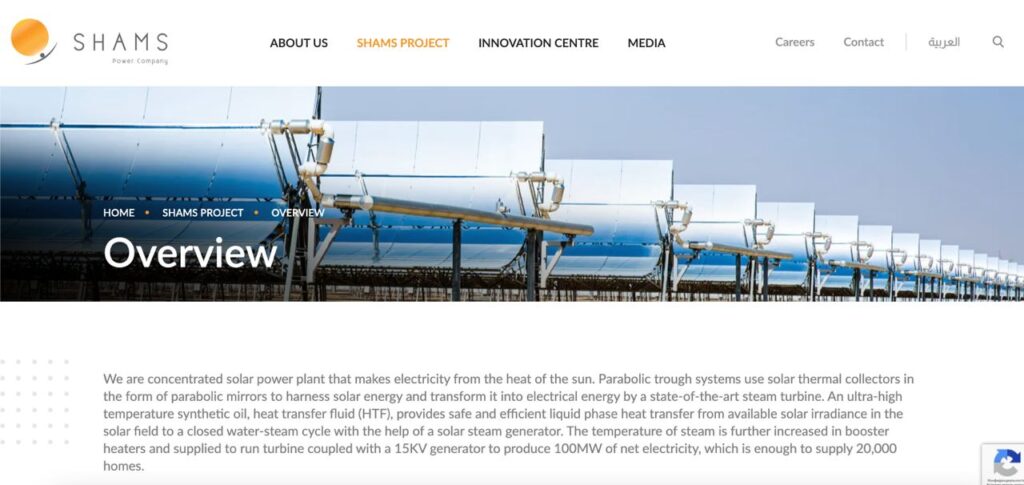
The in Abu Dhabi is one of the earliest large-scale solar projects in the UAE. With a capacity of 100 megawatts (MW), it uses concentrated solar power technology to generate electricity. This means it uses mirrors to focus sunlight onto a central receiver, producing heat that is then used to create steam and drive a turbine to generate electricity. This plant not only showcases the UAE’s early adoption of solar energy but also serves as a model for future projects.
Mohammed bin Rashid Al Maktoum Solar Park
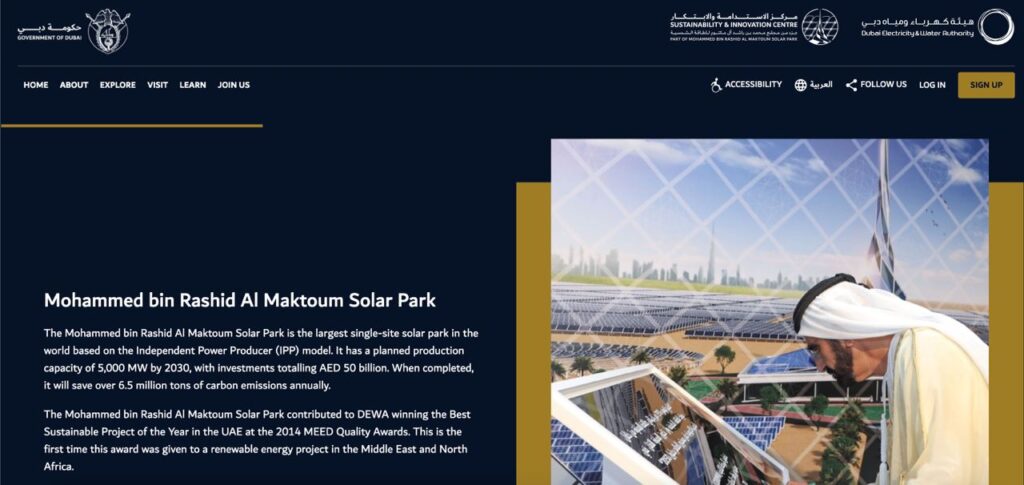
Located in Dubai, the is the largest single-site solar installation in the world. When completed, it will have a capacity of 5 gigawatts (GW). This massive project includes various phases, with both photovoltaic (PV) solar panels, which convert sunlight directly into electricity, and concentrated solar power technology. The scale of this project sets benchmarks for solar energy production globally and demonstrates Dubai’s commitment to a sustainable future.
Noor Abu Dhabi
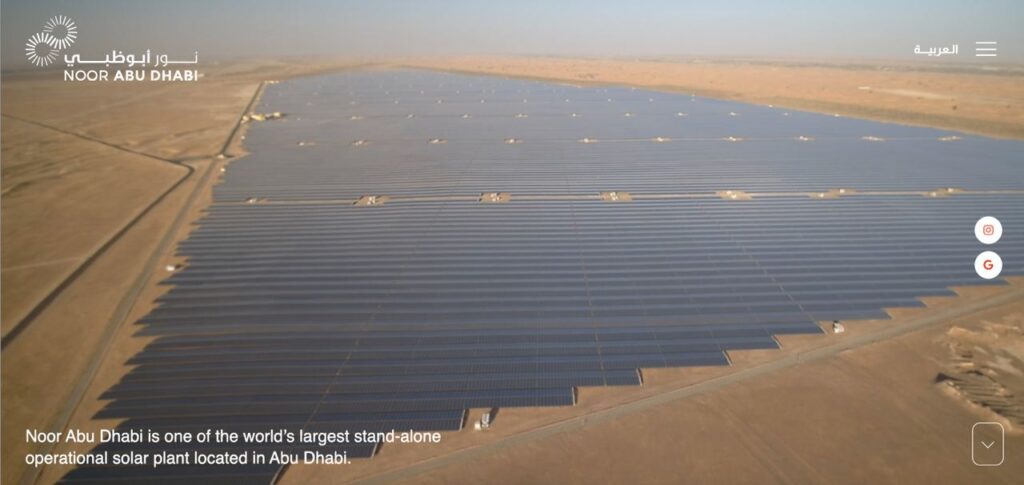
The solar plant is the UAE’s first and largest solar photovoltaic (PV) installation, boasting a capacity of 1.2GW. PV technology involves using solar panels made of semiconductor materials that generate electricity when exposed to sunlight. Noor Abu Dhabi significantly contributes to reducing the UAE’s carbon footprint by providing clean, renewable energy and helps to meet the country’s growing energy demands sustainably.
2. Record-Breaking Solar Tariffs
The UAE has achieved some of the world’s lowest solar tariffs through innovative and competitive projects.
Sweihan Solar Power Plant
The in Abu Dhabi is an impressive project with a capacity of 2.5GW. What makes this project stand out is that it set a world record for the lowest solar tariff at the time of its inception. This means that the cost of generating electricity from this plant is exceptionally low, showcasing how the UAE is leading the way in making solar energy affordable and accessible.
Al-Dhafra Solar Power Plant
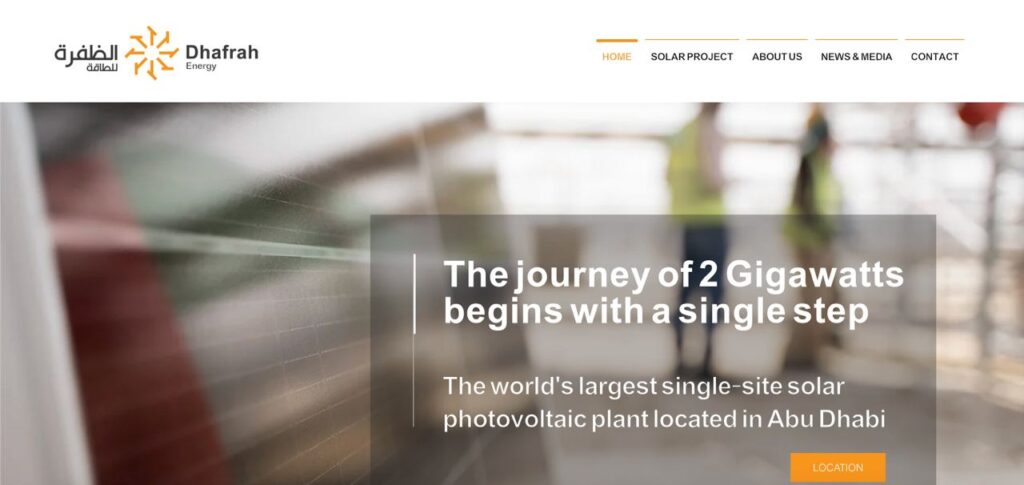
Another remarkable project is the , a 2GW installation in Abu Dhabi. This plant is expected to generate 4,700 gigawatt-hours (GWh) of clean energy annually, which is enough to power hundreds of thousands of homes. By achieving such low costs for solar energy, this project helps to further reduce the reliance on fossil fuels and supports the UAE’s sustainability goals.
Dubai’s Solar Tariffs
Dubai’s efforts to secure some of the world’s lowest solar tariffs are evident through the projects managed by the . By negotiating and securing low tariffs, DEWA ensures that the cost of solar energy remains affordable. This not only makes renewable energy more accessible to the population but also reinforces Dubai’s position as a leader in sustainable energy practices.
3. Integrating Solar with Other Technologies
The UAE is at the forefront of integrating solar energy with other advanced technologies to enhance efficiency and sustainability. These innovative approaches are helping to create a more robust and resilient energy system.
Shams Power Plant Technology
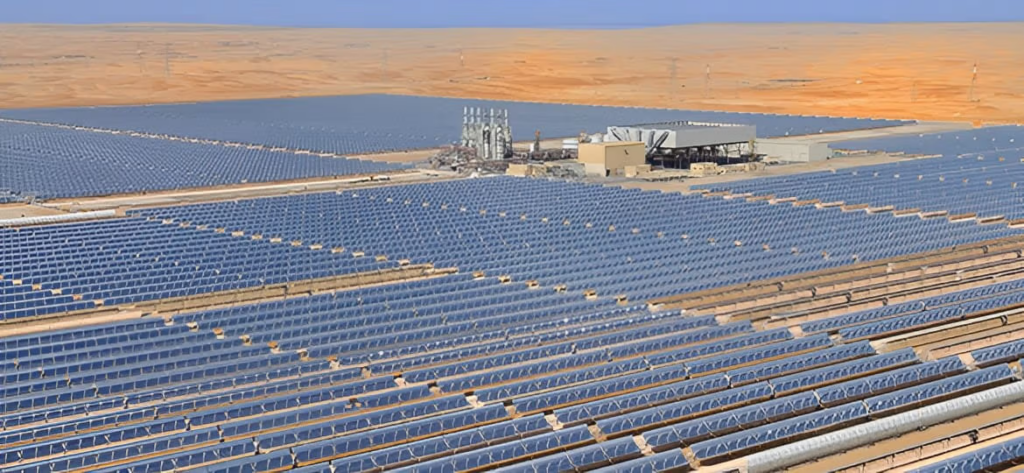
The in Abu Dhabi utilizes cutting-edge technology to maximize energy production. This plant uses parabolic trough collectors, which are long, curved mirrors that focus sunlight onto a central pipe. This concentrated sunlight heats a fluid inside the pipe, which is then used to produce steam that drives a turbine to generate electricity. By integrating this technology, the Shams Power Plant showcases how solar energy can be efficiently harnessed and converted into electricity.
Green Hydrogen Projects
The UAE is also exploring the potential of green hydrogen, which is produced using renewable energy sources like solar power. , Abu Dhabi’s renewable energy company, is working with partners to develop large-scale green hydrogen projects. These projects use solar energy to power the electrolysis of water, splitting it into hydrogen and oxygen. The hydrogen produced can be used as a clean fuel for various applications, from transportation to industrial processes, further reducing carbon emissions and promoting sustainability.
Waste-to-Energy Plant
Another innovative project in Abu Dhabi is the waste-to-energy plant, which converts organic waste into electricity. This facility will generate enough power for approximately 20,000 households. By integrating waste management with energy production, the UAE is addressing two significant challenges: reducing waste and generating clean energy. This project highlights the UAE’s commitment to finding comprehensive solutions for environmental sustainability.
4. Driving Sustainability and Emissions Reduction
The UAE’s solar energy projects are not just about generating electricity; they play a crucial role in driving sustainability and reducing emissions across the country.
Shams Power Plant’s Environmental Impact
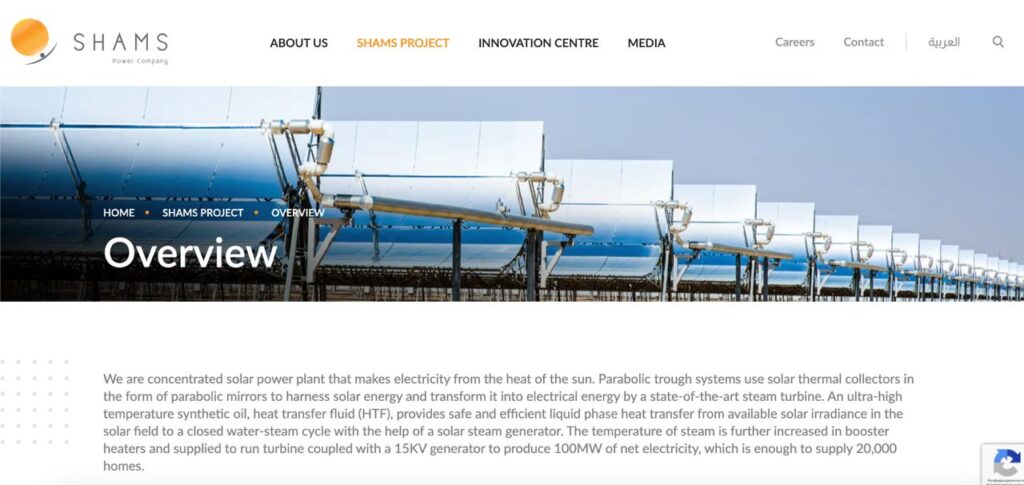
The is a prime example of how solar energy can significantly impact the environment positively. This plant displaces around 175,000 tons of carbon dioxide (CO2) annually, which is equivalent to planting approximately 1.5 million trees. By reducing greenhouse gas emissions, the Shams Power Plant contributes to the global effort to combat climate change and promote a healthier environment.
UAE Energy Strategy 2050
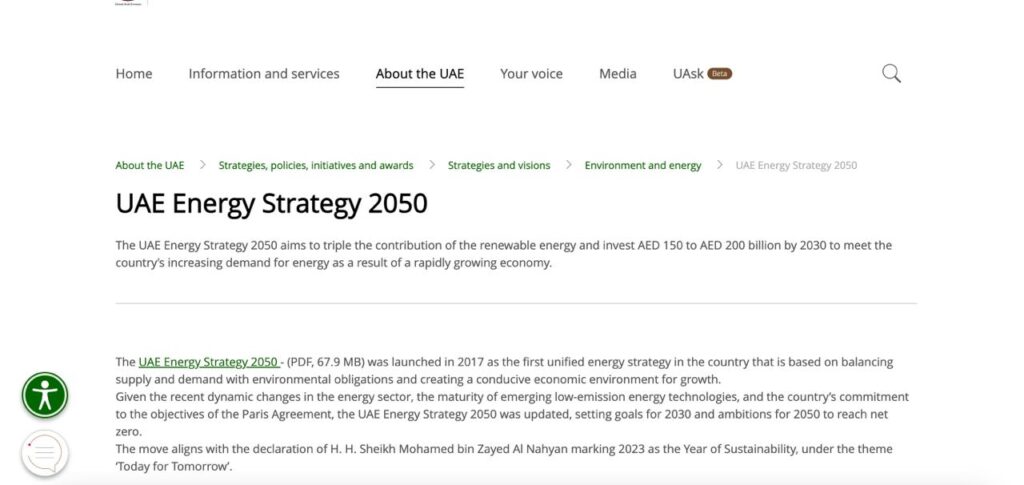
The outlines the country’s long-term vision for a sustainable energy future. The strategy aims for 50% of the UAE’s energy mix to come from clean sources by 2050, with solar energy playing a pivotal role. This ambitious plan includes investments in renewable energy projects, energy efficiency measures, and the development of new technologies to ensure a sustainable and diversified energy portfolio.
Estidama Initiative
Abu Dhabi’s promotes sustainable building and community development. “Estidama,” which means “sustainability” in Arabic, focuses on creating environmentally friendly and energy-efficient buildings. This initiative includes a comprehensive set of guidelines and standards that ensure new developments are designed and constructed with sustainability in mind. By promoting green building practices, the Estidama Initiative supports the UAE’s broader goals of reducing energy consumption and minimizing environmental impact.
5. Global Leadership and Collaboration
The UAE is not only focusing on domestic advancements in solar energy but is also playing a significant role on the global stage. Through international collaborations and hosting major events, the UAE is cementing its position as a leader in renewable energy.
Hosting COP28
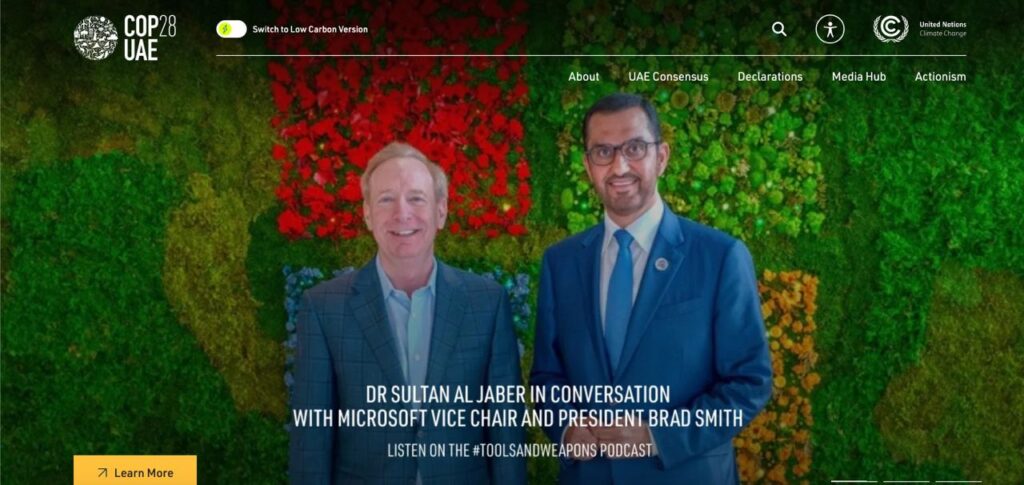
In 2023, the UAE will host the United Nations Climate Change Conference, known as . This significant event underscores the UAE’s commitment to addressing climate change and fostering global cooperation. By hosting COP28, the UAE aims to facilitate discussions and actions that will drive forward global climate goals, emphasizing the importance of renewable energy solutions like solar power.
Masdar’s Global Reach
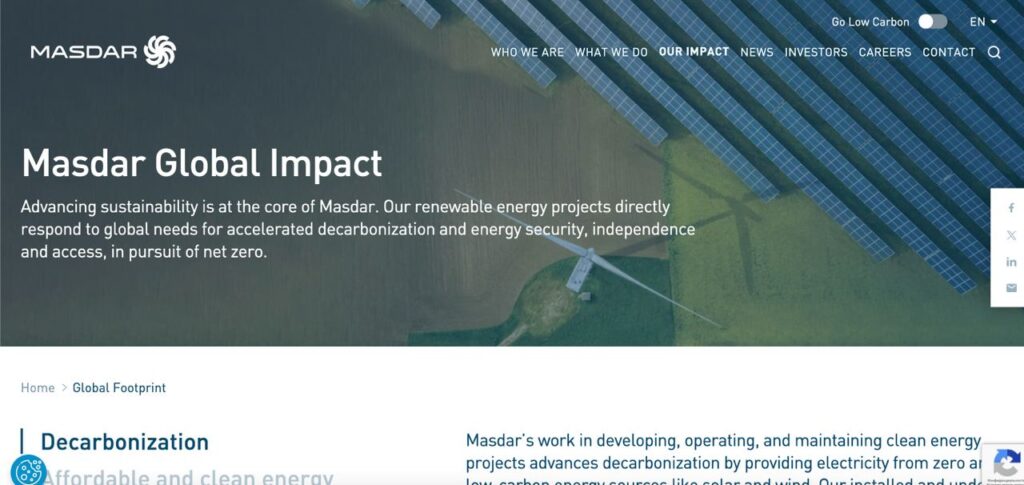
, Abu Dhabi’s renewable energy company, has established a strong international presence with projects in over 30 countries. These projects range from solar and wind farms to energy storage solutions. Masdar’s global reach highlights the UAE’s influence in promoting renewable energy worldwide and its dedication to sharing its expertise and innovations with other nations.
Gulf Hydrogen Alliance
The UAE is also a key player in the , a collaborative effort among Gulf countries to produce hydrogen from solar power. This initiative aims to develop a robust hydrogen economy in the region, leveraging the abundant solar resources to produce clean hydrogen fuel. By working together, the Gulf countries can achieve greater efficiency and scale in hydrogen production, positioning the region as a leader in this emerging energy sector.
Conclusion
The UAE’s strategic investments and innovative projects in solar energy are setting new standards for renewable energy worldwide. Through pioneering solar projects, record-breaking tariffs, integration of advanced technologies, and comprehensive government initiatives, the UAE is driving a sustainable future powered by clean energy.
Read more on CrunchDubai:
By focusing on global leadership and collaboration, the UAE demonstrates its commitment to addressing climate change and promoting renewable energy on a global scale. As the nation progresses towards its ambitious energy goals, it remains a beacon of renewable energy leadership, inspiring other countries to follow suit.
The UAE’s journey in harnessing solar energy is a testament to its vision and dedication to a sustainable future. With continued advancements and strong government support, the UAE is poised to remain at the forefront of the global renewable energy movement, paving the way for a greener and more sustainable world.
